Animals with big lips exhibit unique adaptations that contribute to their survival and distinct behaviors. One notable example is the giant grouper, scientifically known as Epinephelus lanceolatus. This marine species boasts large, thick lips, a feature crucial for its feeding habits. The giant grouper efficiently preys on turtles, lobsters, fish, stingrays, and various crustaceans on the ocean floor, utilizing its sizable lips for easy consumption.
Beyond marine environments, animals like certain primates, such as proboscis monkeys, are recognized for their prominent lips. These facial features play a role in social communication and can vary in size among individuals. Come see this amazing animal world and learn about 15 typical species of animals with big lips.
Different Types of Animals with Big Lips
White Rhino
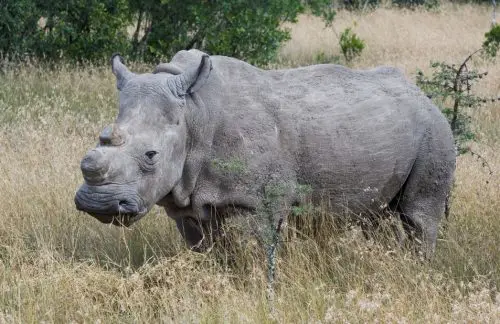
Some of the strongest creatures in Africa are white rhinos. These magnificent animals, who are the continent’s second largest land mammal, live on the grasslands of Africa. Their most distinguishing characteristic is their wide, squared lips, which are used for the same purpose as camels’ lips when they graze—that is, to pick and remove plants from the ground. These animals’ lips can be extremely useful because they mostly eat low-lying vegetation. Because of their pointed shape, these lips, along with their mouth, play a crucial role in differentiating white rhinos from black rhinos.
Gourami
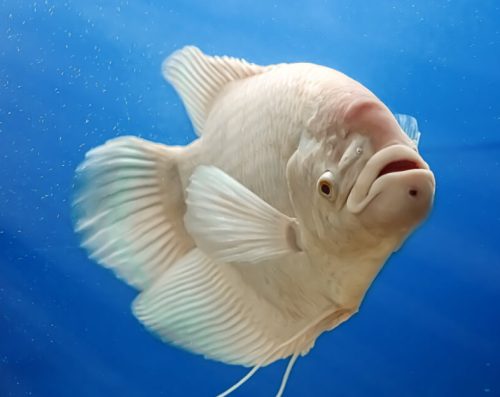
These vibrant fish are a popular choice for aquariums because of their intelligence and amiable disposition. However, a lot of people are still ignorant of their other unusual traits. More interestingly, male gouramis use their large lips to give each other mouth-to-mouth kisses! Gouramis are equipped with projecting lips that allow them to filter food out of the water when they are feeding! This is typically done during a fight for territory or mates as a sign of aggression.
Triggerfish
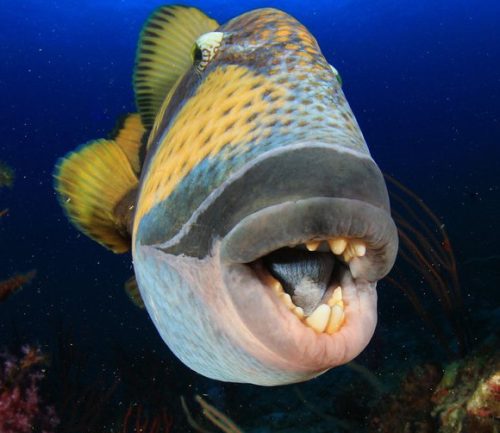
Among the most fascinating animals in the undersea realm are triggerfish. They are recognizable by their characteristic triangle bodies and their balloon-like reaction to shock. But without a question, their enormous lips are among their most striking characteristics. In addition to being able to rummage through sandy ocean floors in search of food, triggerfish’s strong lips also enable them to crush hard shells open with tremendous force.
Flowerhorns
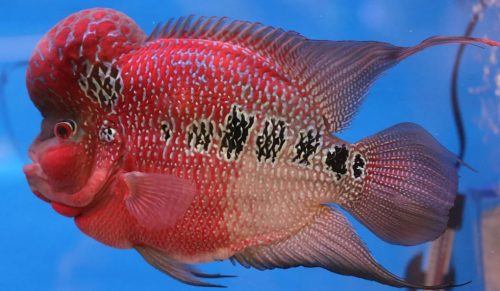
A condition known as duck lips causes flowerhorn cichlids’ lips to swell to amazing proportions, making them stand out from other cichlids in addition to their enlarged foreheads. The fish suffer from this illness, which makes their lips swell, yet curious aquarium goers find it fascinating how an ordinary fish may change to look like it has puffed-up lips. Fortunately, duck lips are typically curable, and the flower horn will become healthy again.
Orangutans
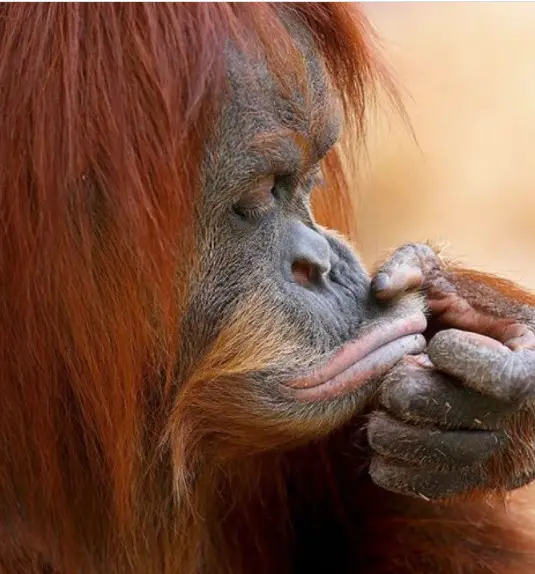
Particularly when it comes to their lips, orangutans are unique and interesting animals. Most noticeable is their lower lip, which is noticeably larger than usual and coated with fuzz that resembles a beard. Furthermore, orangutans make amazing use of their gorgeous lips; they are not merely for display. Together with other vocalizations like grunts and squeaks, they make calls by sucking air through them! In fact, when it comes to oral communication, they resemble humans the most out of all the animals.
Humphead Wrasse
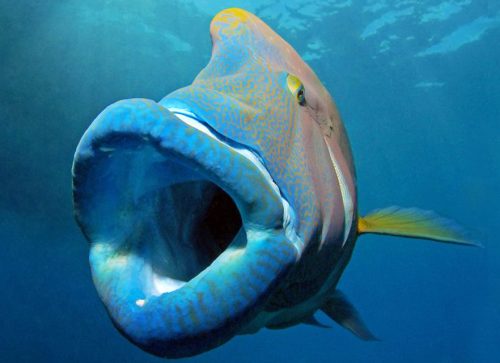
A unique species of fish found only in tropical waters worldwide is the humphead wrasse. Its huge head, which resembles a camel’s, and its tendency to bump into other fish have earned it the moniker. It can be found in numerous locations on the same longitude, including Vietnam, Australia, New Zealand, and India. Furthermore, it can also be found in the Persian and Red Seas. This fish is unusual due to its large lips and enormous size—it may reach up to 1.5 meters in length and 10 kilograms in weight.
Red-lipped Batfish
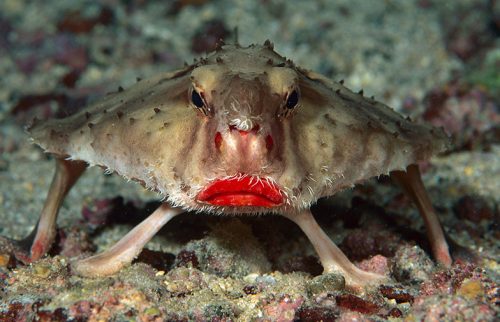
The Galapagos Islands are the only place where one can find the uncommon and distinctive red-lipped batfish. Its unusual look—which includes pronounced red lips—adds to its enigmatic quality. It’s interesting to note that the fish have lips designed for mating, but they are safe for people to touch. According to scientists, the fish may be able to recognize other members of its own species thanks to its vivid crimson lips, which may also pique its love interest.
Camels
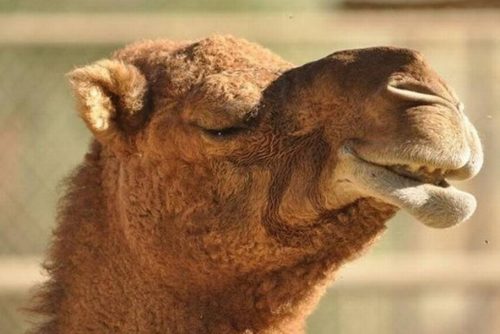
Even the most seasoned animal lovers may not be aware of some of the characteristics that make camels such unusual creatures! One seemingly incomprehensible adaption of camels is that they have two split mouths. Because of their thick and resilient lips, which allow them to feed on even the thorniest vegetation, camels have three functional lips as opposed to just one. Furthermore, judges in camel displays place a lot of emphasis on lips. In fact, back in 2018, a scandal erupted when it was revealed that twelve camels got Botox injections in their lips before competition.
Hippos
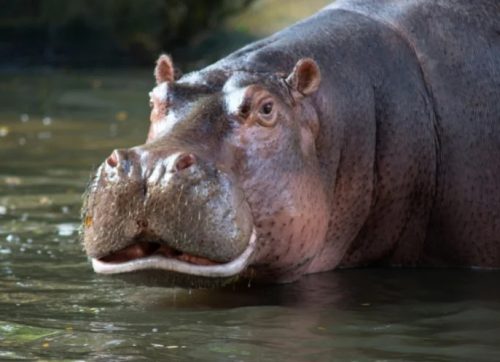
It is hardly surprise that hippos, arguably of the largest terrestrial mammals in the world, would have broad lips to facilitate simpler environmental maneuvering. Those lips aren’t soft like a human’s; rather, they have evolved to be incredibly durable and strong. Their enormous teeth only need protection from their even wider lips thanks to this characteristic, which has become crucial to their capacity to grasp onto and tear out hard plants from the ground. Their large jaws are used to pull and grip grasses, which they then eat with their teeth.
Beluga Whales
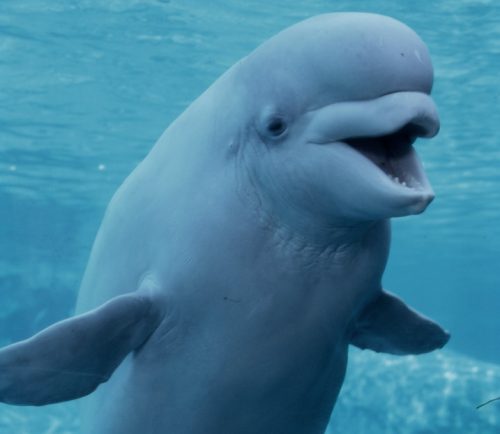
Beluga whales are amazing animals that have developed extremely functional and expressive lips, unlike any other marine species! In fact, belugas use their lips to create a remarkable variety of facial expressions in addition to using them to grasp and consume food. For instance, they frequently arrange them into a ‘O’ shape to represent various emotions; this is quite similar to how people typically pronounce the word “wow.” When they communicate, their melon or forehead also moves.
Big-lip Damselfish
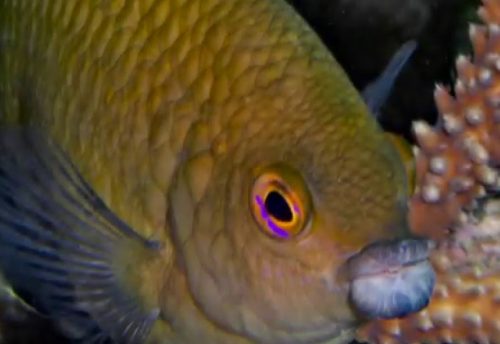
The big-lip damselfish is a formidable animal! Mostly found in the Pacific and Indian Oceans, its enormous lips are hard to overlook. This fish is well-known for having lips that are nearly as wide as its face. This ability to eat hard corals, such as Acropora, which have jagged skeletons and could otherwise injure their prey, is advantageous. While it grazes, the damselfish’s robust lips offer some protection from cuts and scratches. Although many other fishes also have huge lips, the big-lip damselfish is well-known for possessing them.
Napoleon Fish
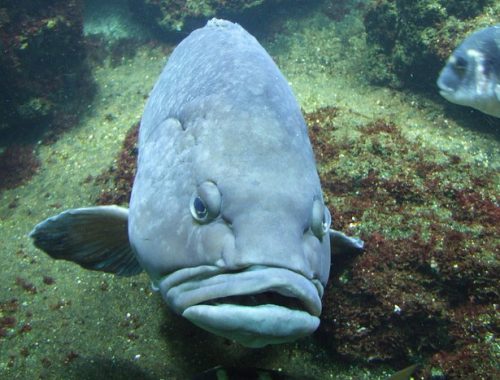
With a maximum weight of 370 pounds, the enormous and enigmatic fish can be found off the east coast of Africa. Not only is it enormous, but it also boasts the largest lips of any fish. Experts believe these large lips are employed to suck in smaller fish, albeit this is not a confirmed theory. However, because of the recent, sharp reduction in its number, this species is now regrettably listed as endangered. It continues to be one of the most amazing creatures inhabiting the waters close to Africa’s coast, even if its extinction is imminent.
Star Sapphires
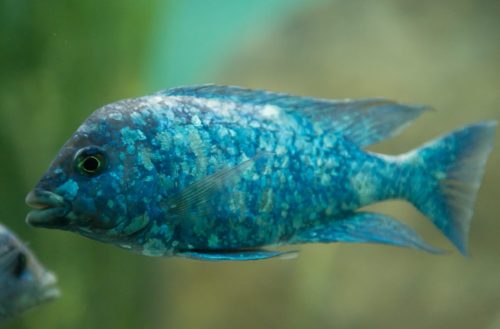
A sight to behold are star sapphires, an endangered type of fish exclusive to Tanzania’s Lake Malawi. But their prominent upper lip is what sets them apart. There are currently more of these fish kept in captivity than residing freely in the lake because of the strain that environmental pressures place on them in the wild. This species has several variations, but the Mdoka, or White Lip, stands out because to its enormous and vividly colored lips! When you consider that these fish are only 6 inches long, their traits become even more remarkable, creating an incredibly unusual sight.
Proboscis Monkeys
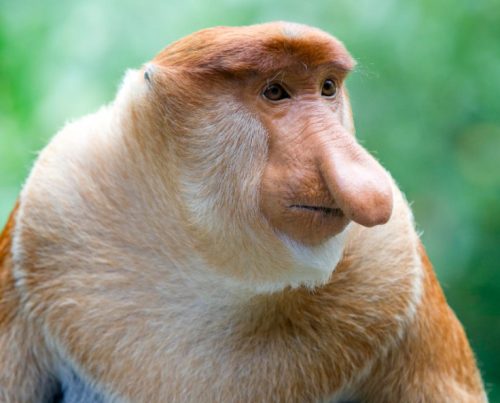
The sight of a proboscis monkey is simply amazing. Their resemblance to humans can make them seem a little strange. A prominent feature is their broad, pear-shaped nose, which droops and appears to cover their lips. Nevertheless, the monkeys still need these lips because they enable them to feed and interact with one another exactly like people do.
Giant grouper
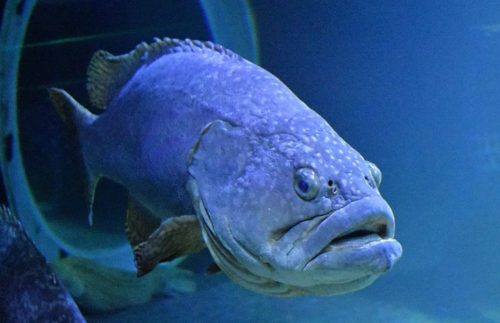
The giant grouper, scientifically Epinephelus lanceolatus, is a sizable marine species found in the Pacific, Indian, and Atlantic Oceans, known for its substantial size and robust physique. These solitary giants adapt to diverse oceanic environments, from coral reefs to shipwrecks, at depths of 3.3 to 328.1 feet. Their territorial defense relies on their large bodies. With large, thick lips, giant groupers efficiently prey on turtles, lobsters, fish, stingrays, and crustaceans on the ocean floor, securing vital nutrients for survival and reinforcing their role as predators in the oceanic realm.
People Who Read This Also Read:






